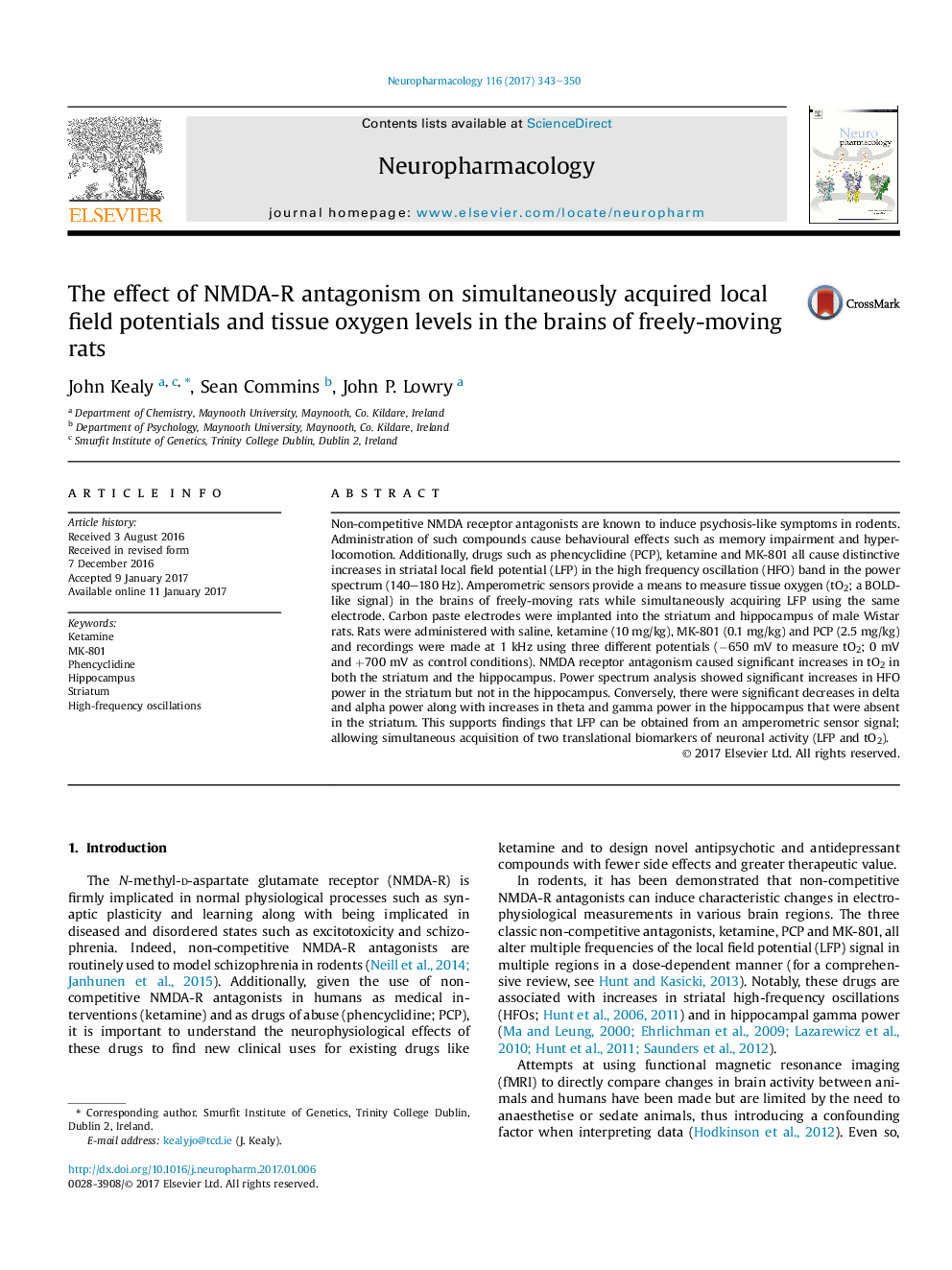| Article ID | Journal | Published Year | Pages | File Type |
|---|---|---|---|---|
| 5548953 | Neuropharmacology | 2017 | 8 Pages |
â¢Simultaneous acquisition of tissue oxygen and local field potential in real-time.â¢Non-competitive NMDA receptor antagonists cause increases in striatal HFO power.â¢Conversely, the same drugs cause increases in hippocampal gamma power.â¢Changes in tissue oxygen occur in the frequency range of 1 Hz and under.
Non-competitive NMDA receptor antagonists are known to induce psychosis-like symptoms in rodents. Administration of such compounds cause behavioural effects such as memory impairment and hyperlocomotion. Additionally, drugs such as phencyclidine (PCP), ketamine and MK-801 all cause distinctive increases in striatal local field potential (LFP) in the high frequency oscillation (HFO) band in the power spectrum (140-180 Hz). Amperometric sensors provide a means to measure tissue oxygen (tO2; a BOLD-like signal) in the brains of freely-moving rats while simultaneously acquiring LFP using the same electrode. Carbon paste electrodes were implanted into the striatum and hippocampus of male Wistar rats. Rats were administered with saline, ketamine (10 mg/kg), MK-801 (0.1 mg/kg) and PCP (2.5 mg/kg) and recordings were made at 1 kHz using three different potentials (â650 mV to measure tO2; 0 mV and +700 mV as control conditions). NMDA receptor antagonism caused significant increases in tO2 in both the striatum and the hippocampus. Power spectrum analysis showed significant increases in HFO power in the striatum but not in the hippocampus. Conversely, there were significant decreases in delta and alpha power along with increases in theta and gamma power in the hippocampus that were absent in the striatum. This supports findings that LFP can be obtained from an amperometric sensor signal; allowing simultaneous acquisition of two translational biomarkers of neuronal activity (LFP and tO2).
